Paraphrasing evil King Edward I, Longshanks from the epic movie, Braveheart: The problem with crossovers is . . . there are too many crossovers.
And they all look pretty much the same.
Because there’s only so much you can do with the basic layout without changing the basic layout into something that isn’t a crossover anymore.
But don’t tell that to BMW.
The X2 is a crossover that doesn’t look one.
It’s based on the BMW X1 – a compact crossover that does look like one. Both are the same length – and have the same drivetrains. The difference is about three inches of height – due to the X2’s sleeker roofline – and less cargo and head room.
But only slightly less.
Pretty impressively, the stylish X2 has 21.6 cubic feet of cargo space behind its second row and 50.1 cubic feet total – with its back seat folded down – which is very close to the 27.1 cubic feet behind the X1’s second row and the 58.7 cubic feet the X1 touts with its rear seats folded flat.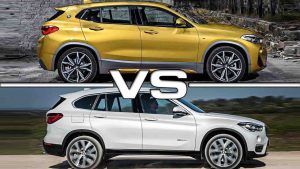
The bigger difference between the two is price.
The X1’s base MSRP (for the FWD sDrive28i) is $33,900 vs. $36,400 for the same basic package in sexier X2 packaging.
With the optional xDrive all-wheel-drive system, the X2 stickers for $38,400 vs. $35,900 for the same thing in taller-roofed/conventionally crossover X1 livery.
Style doesn’t come cheap.
While the X1 has lots of competition – the X2 has the field almost entirely to itself. The next-closest thing to it in terms of size – and sleekness – is the $33,950-$35,950 Mercedes-Benz GLA, which is a less crossover-ish version of the Benz GLC.
But the while the Benz is similarly stylish, it isn’t nearly as practical as the BMW.
It has an almost useless backseat (27.1 inches of legroom vs. 36.7 inches in the X2 and similarly stunted headroom back there, just 35.4 inches vs. 37.1 for the BMW) and more than just a little bit less cargo room (17.2 cubic feet behind the second; 43.6 with the second row folded).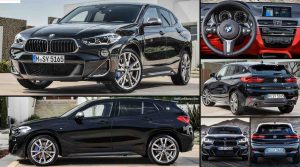
Mercedes sexed-up the GLA’s looks – but with the functional consequences BMW avoided in creating the X2 out of the X1.
WHAT’S NEW
In addition to sleekness, the 2019 X2 is also available with serious speed. A new high-performance M35i variant has been added to the lineup. It gets a 302 horsepower engine (a 74 horsepower upgrade over the regular X2’s 228 hp engine) which gets it to 60 in 4.9 seconds – which makes it one of the quickest small crossovers (whoops, sport activity vehicles) you can buy and the only one you can buy that looks like the X2.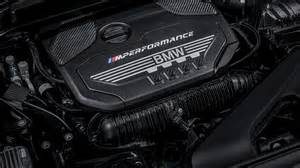
It will also feature a host of M-specific suspension, brake, wheel/tire and cosmetic bits and pieces.
The M-amped version of the X2 directly targets the AMG-amped version of the Benz GLA.
BMW hadn’t released official pricing for the X2 M35i when this review was written in early September but expect something in the neighborhood of $48,000 to start.
Speed doesn’t come cheap, either.
It doesn’t look like a crossover – but it does crossovery things.
It looks good.
Much more practical than also good-looking but space-tight (and much lower to the ground) Benz GLA.
WHAT’S NOT SO GOOD
If you don’t mind tight back seats, the Benz GLA costs thousands less.
No manual transmission option.
Over-sensitive air bag sensors in seats (buckle up your laptop).
Excepting the M-massaged version, all X2s come standard with the same 228 horsepower 2.0 liter turbo four you’d find under the hood of the X1, along with the same eight-speed automatic transmission.
You have the option to go front-wheel-drive (standard) or you can upgrade to the optional xDrive all-wheel-drive system.
Kudos, by the way, to BMW for not touting its all-wheel-drive system as four-wheel-drive, a practice that’s becoming very common and which has created a lot of confusion.
Confusion – because although both systems cause all four wheels to be driven, they drive the wheels differently.
Most AWD systems are what is called front-biased, meaning that most of the time, most of the engine’s power drives the front wheels. When they begin to lose traction, engine power is automatically routed to the rear wheels.
4WD, on the other hand, used to always refer to a rear-biased system that was also part-time. Most of the time, all of the engine’s power drove the rear wheels. When the driver engaged the 4WD, the power split 50-50, front to rear. 4WD systems usually also have a transfer case and 4WD Low range gearing. This type of system used to be specific to trucks and SUVs based on trucks.
But the rugged connotation of “4WD” proved irresistible to the people marketing crossovers – almost all of which are based on FWD cars – and so there are now a plethora of FWD-based crossovers with AWD that tout their systems as 4WD.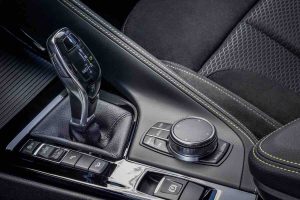
Ironically, AWD is the better system for crossovers – for any vehicle that is driven mostly on-road.
AWD is both a traction and a high-speed handling advantage; 4WD is a traction advantage only – and only when it is engaged. And 4WD isn’t meant to be engaged on dry pavement or even wet pavement. It is meant for snow and mud and things off-road.
This doesn’t mean that the AWD-equipped X2 can’t leave the pavement; it can – and it can do so better than the also-AWD-equipped Benz GLA, because it has almost two inches more ground clearance (7.2 inches vs. 5.3 for the Benz).
It can deal with snow on-road, too.
But unlike 4WD-equipped SUVs – which aren’t cut out for cornering – the BMW’s AWD system is designed for it.
It is full-time, so on all the time. It doesn’t just keep you moving on slick roads, it keeps you from sliding in the curves.
The X2 is also quick: Zero to 60 in either the FWD sDrive28i or the xDrive-equipped version takes just over six seconds. Gas mileage is about the same either way, too: 23 city, 32 highway for the FWD version and 21 city, 31 highway for the AWD-equipped version.
This is another AWD upside, by the way. There’s usually not that much MPG difference between a FWD and AWD-equipped version of a given vehicle, because AWD doesn’t add much weight to the car.
4WD does. Usually at least 150 pounds, on account of the transfer case – a whole additional piece of equipment – and that additional weight almost always results in a significantly heartier appetite for gas as well as lesser acceleration.
The new M35i version of the X2 also uses a 2.0 engine, but it’s essentially a whole new engine. Its internals have been beefed up, it gets a larger turbo and thus produces 302 hp and 332 ft.-lbs. of torque, enough to lop almost two seconds off the regular X2’s 0-60 time. This version of the X2 comes only with xDrive and gets a beefed-up version of the xDrive system, including a limited slip front differential. The eight-speed automatic is also calibrated for spine-adjusting shifts (when desired).
Mileage numbers for the M35i weren’t available when this review was written but expect them to be noticeably less than the regular X2’s – AWD or not.
You can’t go that fast without burning more gas.
BMW used to specialize in sixes. Not the V6s almost everyone else specialized in.
In-line sixes. Not as compact as V6s but inherently better balanced and smooth. Pus they had a song all their own.
BMW stills the six – but only here and there. Chiefly because it’s too thirsty. Not for BMW buyers but for the government, which somehow became the Decider for how much gas our cars use.
Hence the turbo four.
On the downside, it doesn’t sing. There is very little sound of any kind at all – not even a faint turbo whistle (which some of us might actually appreciate). On the upside, the little four makes more power than the old six (un-turbo’d) and gets much better gas mileage.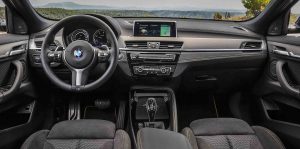
Lemonaid out of government lemons, so to speak.
And it’s more than just power. The four’s stronger in the low and mid-range, where the boost builds torque (258 ft.-lbs.) with what seems to be very little effort. The turbo acts exactly like steroids, making small things big.
BMW purists – and count me among them – miss the traditional six, but it’s hard to argue with the virtues of the four.
The X2 (and X1) are BMW’s only front-wheel-drive-based models, but it’s hard to tell without getting very enthusiastic. If you do, you’ll encounter more understeer than oversteer – typical of FWD-based vs. RWD layouts. But at anything less than 90 percent Full Effort, you’ll find the X2 drives – and handles – very much like the rear-drive-based X3 and other BMWs.
With one exception. The FWD X2 will squeal the front tires, if you get enthusiastic. Plenty of torque to do it, too.
AT THE CURB
Stylish clothes are usually not functional. The same is usually true when it comes to stylish crossovers . . . er, sports activity vehicles (SAVs) which is what BMW insists on calling the X2.
Regardless, its stylishness does not impinge upon its crossover-ish functionals. There is slightly less cargo and head room – but as detailed earlier, it’s not enough to make this thing the vehicular equivalent of stiletto heels and a thong.
Which its main cross-shop, the Benz GLA, arguably is.
The X2 – which is a couple (actually 3.2) inches shorter overall than the Benz is hugely – exactly the right word – more space efficient.
It has 9.6 inches more second row legroom, if you can believe that. And Almost two inches more headroom in the back, too.
There is very little price to pay for looking good . . . if you buy the BMW.
Some reviewers kvetch about the X2’s lesser headroom vs. the taller-roofed X1 but I fit with air to spare in both of the X2’s rows and I’m 6ft 3.
If I fit, you will – unless you’re taller than me.
But I don’t fit in the GLA’s back seats; almost no one fits back there. To get a handle on how tight 27.1 inches of legroom (in the GLA) is, consider that a Fiat 500 micro-car (which is only 139.6 inches long vs. 175.4 inches long for the GLA) has 31.7 inches of rear seat legroom.
Fernando (some will remember the ’80s SNL reference) said it was better to look marvelous than to be marvelous. Why not both?
The X2 draws looks not just because it does look marvelous but because – for once – it doesn’t look like everything else. Lots of interesting – and different – styling touches, not just the lowered roofline. The BMW spinners on the rear sail panels, for instance. The asymmetric hidden grab handle built into the center console. The shape of the gas door – which is a rear-leaning rectangle instead of just a boring rectangle. The haunchy – almost muscle car squat – of the thing.
It looks most striking at night, especially inside – as the cabin becomes bathed in the glow of the configurable color LED backlighting strips built into the door panels and dash, just like The Egg first-class air travelers are cocooned in while the Proletariat jostles for elbow space back in Coach.
The one thing that’s wrong with this thing may not be BMW’s fault. Air bag sensors – built into seat cushions, to detect the presence and weight of occupants, in order to trigger (and adjust the force of) air bag deployments in the event of a wreck are becoming extremely sensitive.
Too sensitive.
The ones in my X2 test car sensed the presence of my Macbook Air laptop – which weighs next to nothing and certainly not as much as any human being. Yet it sensed its presence – and that triggered the buckle-up buzzer, an obnoxious distraction. The only solution? Buckle up the laptop – or sandwich – you have riding shotgun with you.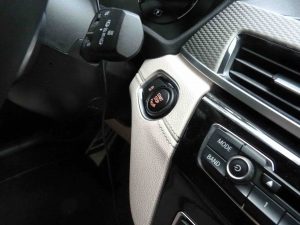
Otherwise, two thumbs up. Even the formerly obnoxious auto-stop/start system (which all BMWs and almost all new cars now have, to fractionally improve Corporate Average Fuel Economy numbers) is much less so in the X2. The former “paint shaker” histrionics have been tamped down to almost nonexistent such that even I often forgot to manually turn the system off – which I have always done in cars equipped with this “feature.”
Auto-stop/start is of dubious value to the vehicle owner – the mileage gains are fractional and there is no question the constant stopping and starting is harder on the battery and may be harder on the engine, too. But it’s more in the background now, and that’s a big plus.
And you can still turn it off, if you prefer.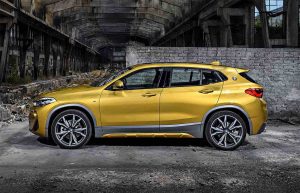
The X2 would be even more different drummer if BMW offered it with a manual transmission – which is probably very doable given the X2 (and X1) share their underthings with the BMW Mini Cooper, which is available with a manual.
But BMW management – being comprised of Germans – prefers the efficiency and yes, superior performance, of the X2’s well-programmed automatic. Why would anyone want a manual, they reason?
Well, for the fun of it. Not as precise, perhaps. But dumping the clutch – and even occasionally missing a shift – is just that. Fun.
Of course, that’s a hooligan American concept.
THE BOTTOM LINE
The X2 is just the ticket for the crossover-inclined . . .who would rather not find himself driving another crossover.
. . .
Got a question about cars – or anything else? Click on the “ask Eric” link and send ’em in!
If you like what you’ve found here please consider supporting EPautos. This is a free publication; no firewalls or “pay” areas.
We depend on you to keep the wheels turning!
Our donate button is here.
If you prefer not to use PayPal, our mailing address is:
EPautos
721 Hummingbird Lane SE
Copper Hill, VA 24079
PS: EPautos magnets are free to those who send in $20 or more. My latest eBook is also available for your favorite price – free! Click here. If you find it useful, consider contributing a couple of bucks! 


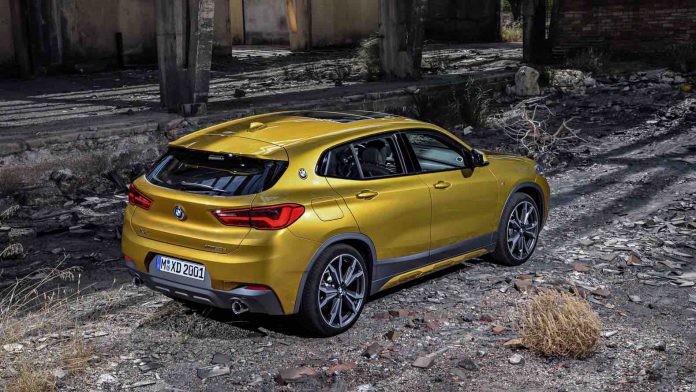

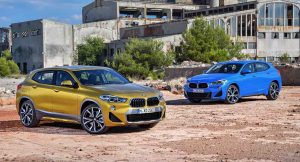
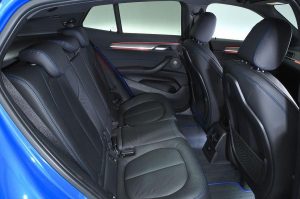
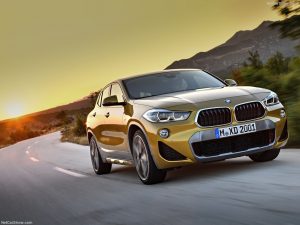
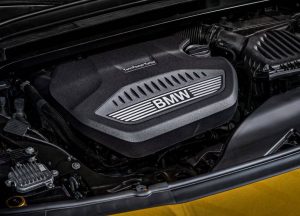
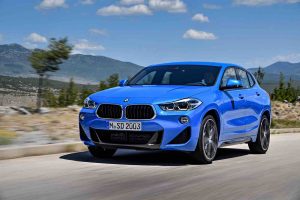


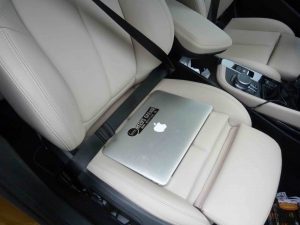








With the relatively small windows and high hood and doors it looks like visibility might be restricted in this um car. But that seems to be a theme with all new car designs.
Hi Mark,
Almost all new cars have that “look” – high hood and doors – because of federal crash testing rigmarole. Make the cars “safer” to be in if you crash… but more likely to crash because of terrible visibility.
Your tax dollars at work!
Crossover vehicles exist to satisfy demands of utility and STYLING…since “womyn” make the majority of “family” vehicle purchase decisions, they want something that they feel comfortable being SEEN in. If a single woman buys a crossover, it’s because she figures on hauling kids (growing or grown), or her mother, or FRIENDS, around. Else, most women just buy a mid-size sedan as such satisfies the appearance criteria and is reasonably easy to drive, yet “big” enough that they feel safe. When I was a kid, most “womyn” were HOMEMAKERS, and like Carol Brady on “TeeVee”, drove some big battleship station wagon around, not only because it had enough room for the 4.7 kids, but being based on a full-size chassis, was BIG enough that she felt SAFE.
A man, if truly buying a car for himself, picks the ride more based on utility, not that he doesn’t want ‘styling’, but within the parameters of the basic vehicle type he gets. If long-distance commuting is the intended primary use, he wants efficiency, and usually gets a subcompact sedan or hatchback. If he wants to haul crap around, he gets a pickup. If you see a single man buying a crossover, he’s either gay or henpecked by his ‘significant other’ and ‘she’ has designs on driving that herself and he drives her beat-up ten year old Toyota Corolla to work.
I don’t hate the X2 at all. But if I were looking for this kind of vehicle, there are at least two competitors I’d buy instead. The following is of course, subjective.
If the slower i28 was my price range, I’d buy the Hyundai Elantra GT Sport instead. Seriously, the more BMW chooses to wallow in the CUV waters, the more they dilute their “gotta have it” factor. The Hyundai will be cheaper, with similar acceleration, and probably near equal build quality. Only X2 superiority will be handling.
If I was considering the pricier M35i, I’d rather buy the Volkswagen Golf R. Equal acceleration and near equal handling and cargo capacity. And in my eyes, a way higher “cool factor.”
Let’s face it, so many soccer mom types have been buying CUVs that they will soon become “the new minivans.” Nothing wrong with that (or with minivans.) However, charging huge price premiums for more performance or illusive prestige is becoming oxymoronic.
Is this a “BMW’d” Mini? I remember hearing about the plans for this affordable bmw badged cross over. I think it is a serious performer over the Mini.
If the X2 is like most BMWs there are a number of demerits:
1) Usually add approximately 15% additional cost for desirable “options”.
2) Low profile run-flats notorious for finding potholes and putting a 1k dent in your rims and wallet.
3) 4-cylinder engines in high-cost vehicles?
4) Parts/maintenance expense
5) Ich nicht sprecken Deutch
And as in most new vehicles: auto stop/start, direct injection, turbochargers, 8-10 speed complicated transmissions – a 6-speed seems about ideal.
It’s entertaining watching the new-car parade go by, and while enjoying the clowns, I’m not buying anything.
Eric – Would the Land Rover Discovery Sport also be a competitor? Seems similar, but with AWD standard.
Hi Michael,
Yes, the Disco Sport could be considered a competitor, but it leans more toward the SUV side of the aisle. It is about 7 inches higher and it has more ground clearance. It does have a roomy back seat – and for people looking for something compact that’s not basically a two-seater with room for groceries in the back (GLA) it is certainly worth a look!